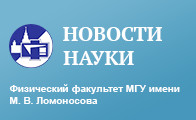The influence of the thickness of the surface neutron layer in $^{208}$Pb on the yields of spectator nucleons in $^{208}$Pb-$^{208}$Pb collisions at relativistic energies at the Super Proton Synchrotron (SPS) and Large Hadron Collider (LHC) is estimated by means of the Abrasion-Ablation Monte Carlo for Colliders (AAMCC) model developed by the authors. AAMCC predicts the formation of spectator matter bound into fragments as well as free spectator neutrons and protons as a function of collision impact parameter. As shown for the first time by simulating collisions of nuclei with different thickness of the surface neutron layer, an excess of surface neutrons in $^{208}$Pb leads to a noticeable increase in the number of spectator neutrons relative to the number of spectator protons in central nucleus-nucleus collisions. With a typical excess of surface neutrons, known from theory and experiments at low energies, the model also predicts a doubling of the cross sections for the production of a certain number of neutrons in central events without the emission of spectator protons. In view of the discrepancy between the data on the surface neutron layer obtained by various experiments, the study of the yields of spectator nucleons in collisions of relativistic nuclei can be proposed as a new research method. Such measurements can be performed in the ALICE experiment at the LHC equipped with forward hadron calorimeters to register spectator neutrons and protons.
25.75.-q Relativistic heavy-ion collisions
$^1$Phystech School of Fundamental and Applied Physics, Moscow Institute of Physics and Technology\
$^2$Institute for Nuclear Research RAS



